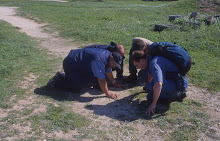
After a century of experimentations it seems that contemporary art has eventually developed his language. If you visit a museum of contemporary art you see pieces that are different and diverse, but that nonetheless all speak a common tongue, consistend and easy to recognize. A few – for instance Philippe Daverio - see the similarity among these works as repetition, and the fact that the works of nowadays are very similar to those of a few decades ago as crisis; but it is useful to recall that this is not at all new. After three centuries of experimentations, from Giotto to Raphael, classic arte eventually developed his language that was adopted almost without variation by all subsequent artists - from Raphael up to the invention of photrography. XVII and XVIII century art is somewhat repetitive, but it certainly does not represent an example of crisis. The comparison of recent contemporary art to mannerism is certainly not new, but my feeling is that we are already beyond mannerism.
Art of the Reinaissance tried to represent the reality, following the precepts of Aristotle; and the cornerstone of the art of the Renaissance is the discovery of perspective. It is more difficult to define the nature of contemporary art: the cornerstone is certainly Duchamp’s Fontana, but it’s difficult to find something coherent in the many roads that the art of XX century has explored; in my opinion, contemporary art instead of reality tries to represent feelings – the roots of contemporary art are in the Romantic movement of XIX century that eventually originated the Impressionism.
Art of the Reinaissance tried to represent the reality, following the precepts of Aristotle; and the cornerstone of the art of the Renaissance is the discovery of perspective. It is more difficult to define the nature of contemporary art: the cornerstone is certainly Duchamp’s Fontana, but it’s difficult to find something coherent in the many roads that the art of XX century has explored; in my opinion, contemporary art instead of reality tries to represent feelings – the roots of contemporary art are in the Romantic movement of XIX century that eventually originated the Impressionism.

Nessun commento:
Posta un commento